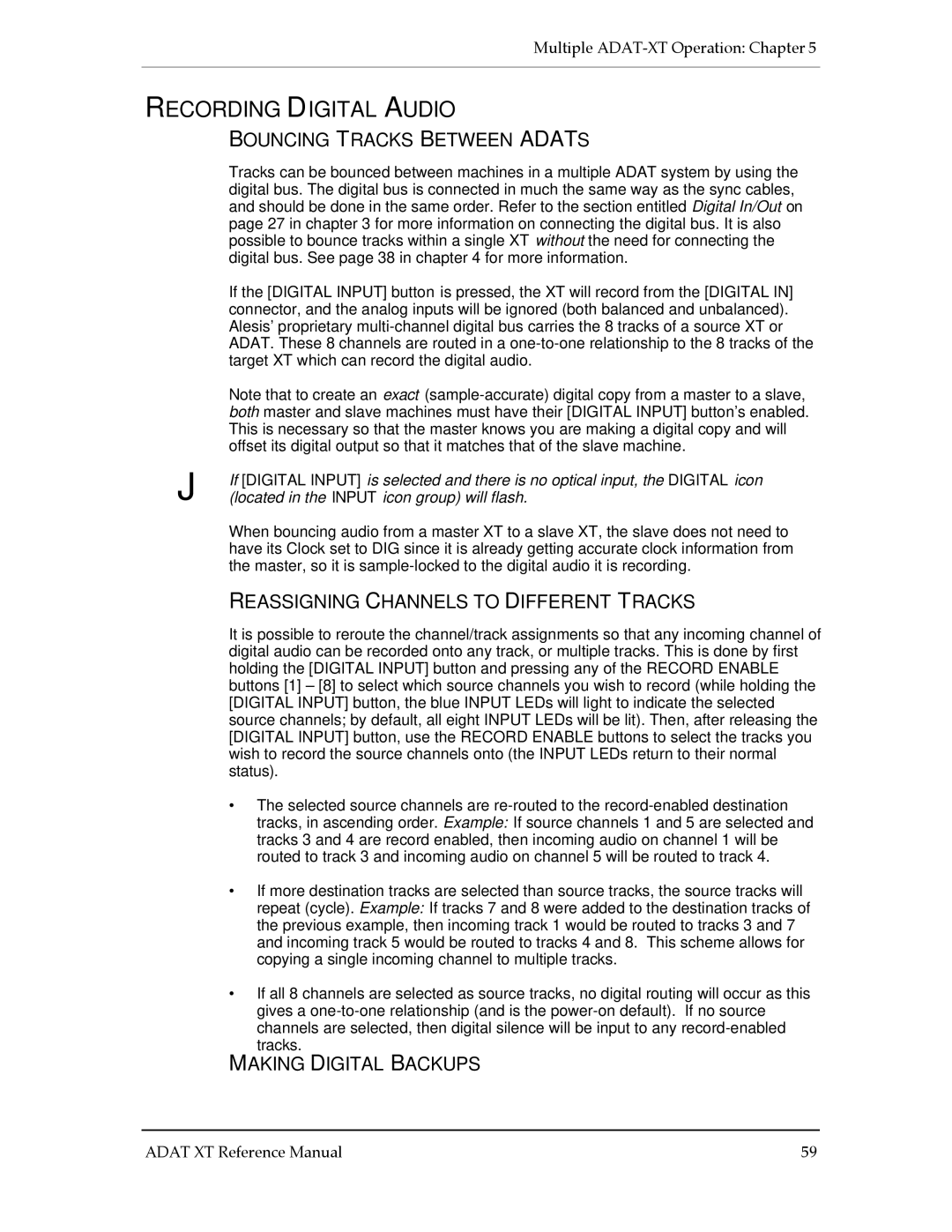
Multiple
RECORDING DIGITAL AUDIO
BOUNCING TRACKS BETWEEN ADATS
| Tracks can be bounced between machines in a multiple ADAT system by using the |
| digital bus. The digital bus is connected in much the same way as the sync cables, |
| and should be done in the same order. Refer to the section entitled Digital In/Out on |
| page 27 in chapter 3 for more information on connecting the digital bus. It is also |
| possible to bounce tracks within a single XT without the need for connecting the |
| digital bus. See page 38 in chapter 4 for more information. |
| If the [DIGITAL INPUT] button is pressed, the XT will record from the [DIGITAL IN] |
| connector, and the analog inputs will be ignored (both balanced and unbalanced). |
| Alesis’ proprietary |
| ADAT. These 8 channels are routed in a |
| target XT which can record the digital audio. |
| Note that to create an exact |
| both master and slave machines must have their [DIGITAL INPUT] button’s enabled. |
| This is necessary so that the master knows you are making a digital copy and will |
| offset its digital output so that it matches that of the slave machine. |
J | If [DIGITAL INPUT] is selected and there is no optical input, the DIGITAL icon |
(located in the INPUT icon group) will flash. | |
| When bouncing audio from a master XT to a slave XT, the slave does not need to |
| have its Clock set to DIG since it is already getting accurate clock information from |
| the master, so it is |
| REASSIGNING CHANNELS TO DIFFERENT TRACKS |
| It is possible to reroute the channel/track assignments so that any incoming channel of |
| digital audio can be recorded onto any track, or multiple tracks. This is done by first |
| holding the [DIGITAL INPUT] button and pressing any of the RECORD ENABLE |
| buttons [1] – [8] to select which source channels you wish to record (while holding the |
| [DIGITAL INPUT] button, the blue INPUT LEDs will light to indicate the selected |
| source channels; by default, all eight INPUT LEDs will be lit). Then, after releasing the |
| [DIGITAL INPUT] button, use the RECORD ENABLE buttons to select the tracks you |
| wish to record the source channels onto (the INPUT LEDs return to their normal |
| status). |
•The selected source channels are
•If more destination tracks are selected than source tracks, the source tracks will repeat (cycle). Example: If tracks 7 and 8 were added to the destination tracks of the previous example, then incoming track 1 would be routed to tracks 3 and 7 and incoming track 5 would be routed to tracks 4 and 8. This scheme allows for copying a single incoming channel to multiple tracks.
•If all 8 channels are selected as source tracks, no digital routing will occur as this gives a
MAKING DIGITAL BACKUPS
ADAT XT Reference Manual | 59 |
